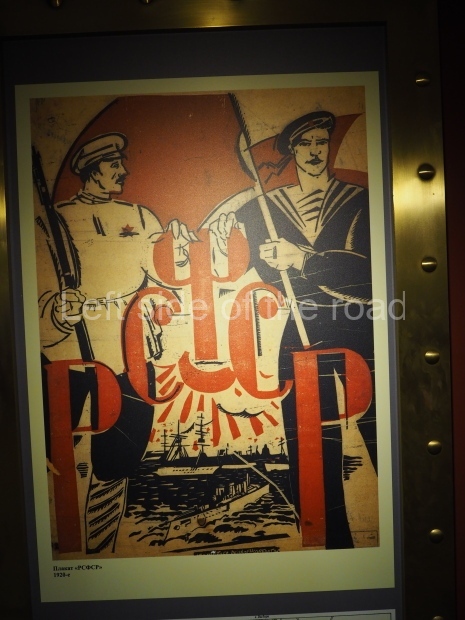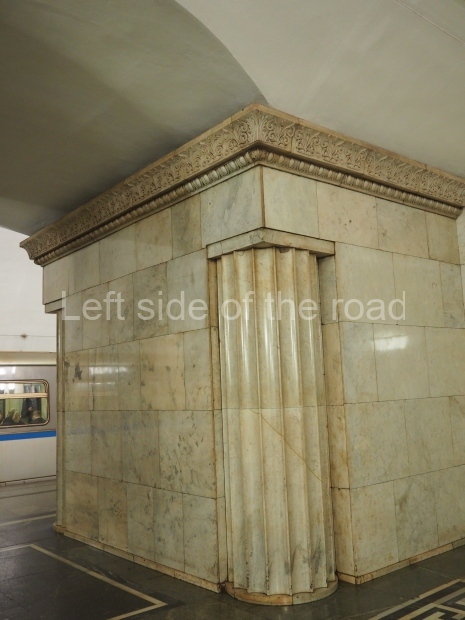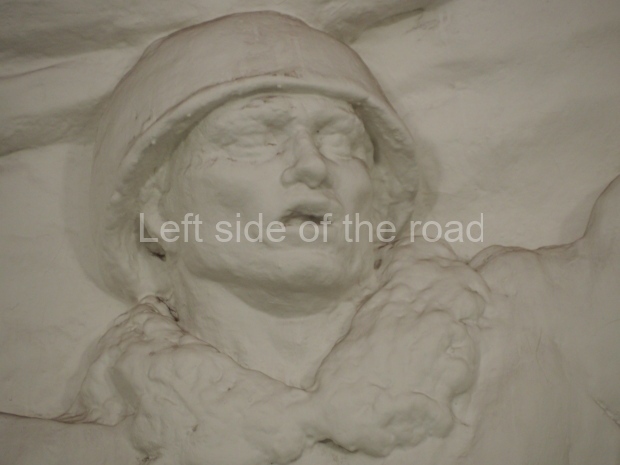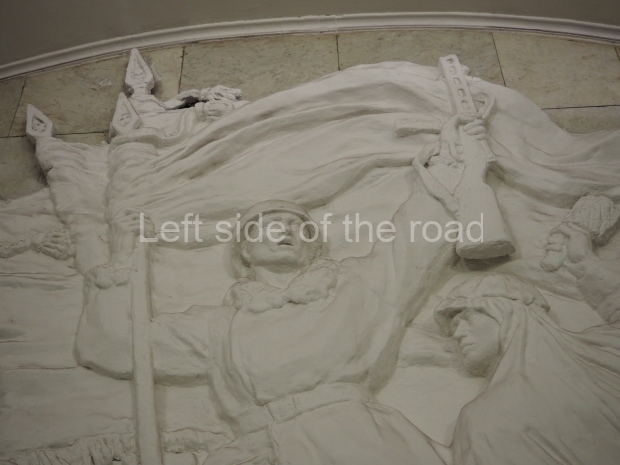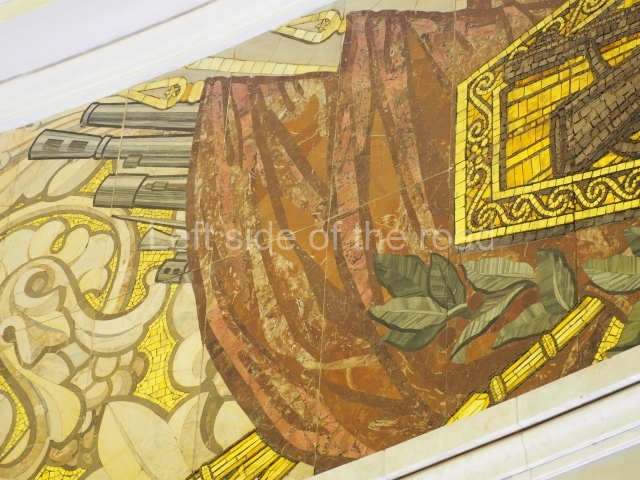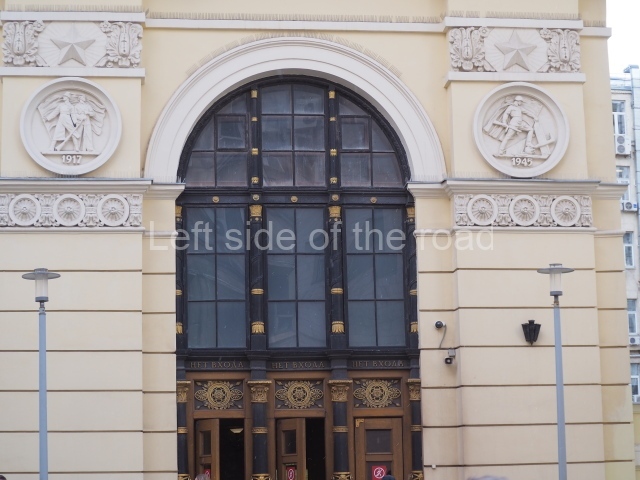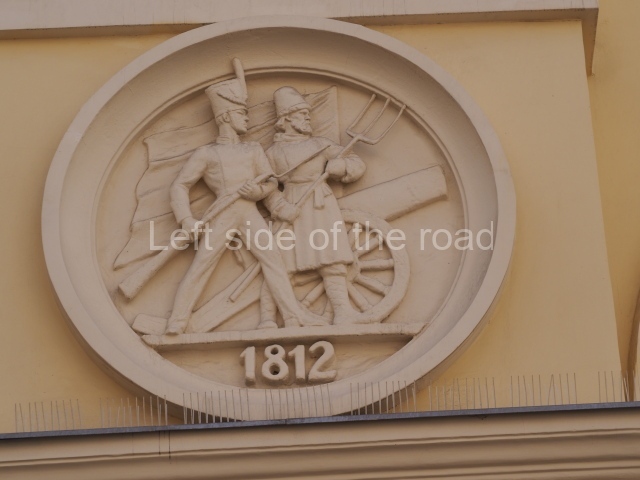Moscow Metro – the world’s biggest Socialist Realist Art Gallery
The Cruiser Aurora – Leningrad (Saint Petersburg)
The Aurora is famous for playing a symbolic role in the October Revolution of 1917 (although it’s crew were staunch Bolsheviks and the ship played the role as an organisational base for the planning of the seizure of power).
On the night of October 25-26 1917 a blank shot from her forecastle gun was fired at the Winter Palace giving the signal to the revolutionary workers, soldiers and sailors of the city to storm the palace.
It suffered severe damage during the Nazi siege of Leningrad – 8 September 1941 –
27 January 1944 – but was re-floated after the war. Its latest renovation was completed in 2016 and is now moored off Petrovskaya Naberezhnaya, opposite the Nakhimov Navy School, and is maintained by the cadets of the school.
It features in the background of the mosaic at one end of the platform in the city’s Baltiyskaya metro station.
Nearest Metro:
Gorkovskaya
Opening times:
Daily, 11.00 – 18.00 (apart from Monday and Friday)
Moscow Metro – the world’s biggest Socialist Realist Art Gallery



















